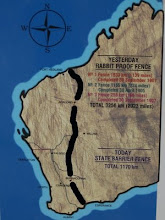
The Tears of Strangers: a family memoir by Stan Grant takes the reader back to Stan’s hard and ugly childhood. Stan explains his personal dilemma as an Aboriginal man, now successful in a white society. Unlike many memories by other Authors which may tend to be one sided or lenient, Stan’s testimony is objective and honest. Stan’s book goes through many subjects and issues that were main parts of Stan’s life, as well as relevant to other Aboriginal people. A part that we can all sympathies to and many Aboriginal people have gone though and suffered from is the Child Welfare Act, which is talked about in chapter 2.
The 1939 Child Welfare Act gave the Aboriginal Welfare Board the power to seize any Aboriginal child who is thought to be neglected or uncontrollable. The Act bought fear to Stan’s mothers as well as many other Aboriginal mothers and families. Stan’s mothers poem, which is recalled in on page 41, chapter 2, in regards to the Welfare Act and is very powerful and meaningful. The poem tells the pain of those years bought on Stan’s family, which was probably the same with other Aboriginal families.
The welfare’s in town!
The welfare’s in town!
How fast the world gets around.
First they go to the schools,
to check the rolls and find
the fools who stay away;
‘That just won’t do,’ we hear them say.
‘Maybe we’ll send the kids away.’
They go to our homes.
Don’t knock, just walk in.
‘Show me the clothes for
the children,’ they’d say.
But there’s not many clothes
When you don’t get no pay.
‘Where’s the food?’
‘What do they eat?’
‘Show me the beds.’
‘Where are the sheets?’
‘We will report this when the
Welfare Board meets . . . ‘
The poem above tells the story of the stolen generation through its simple wording and short sentences, painting a picture for the reader. In a few short paragraphs the poem tells the story of the stolen generation from the point of view of the Aboriginal families allowing the reader to understand the story. The poem explains what happened when the Welfare act was established as well as the fear the families and children went through, how the Welfare officers acted and how harsh they seemed or were. Stan’s mother’s poem is very well written and its simplicity makes it easy to understand as well as interesting to read. Behind those simple sentences and simple words there is great sadness and a story which makes the reader emotional and sympathetic.
This section in Stan’s book including the poem is very interesting and is well written. The poem is very catch and it is easy to read over and over again as each time it is read the greater meanings start to appear and the poem starts to expand in its meanings. It takes the reader through the pain, fear and terror the Aboriginal families went through and wether the reader is an Aboriginal person or a white person they can relate to this kind of fear and the pain that it would bring to a family through the loss of a child. Including the poem in the book is very effective as the poem is interesting and very informing as it allows the reader to really understand what Stan is talking about and really relate to it. I have found the poem really interesting, emotional and meaningful. Even though it is simply written and short in a way it still told the whole story including the emotions the families went through.
Grant, S. 2002, The tears of strangers: a family memoir, Harper Collins: Sydney


